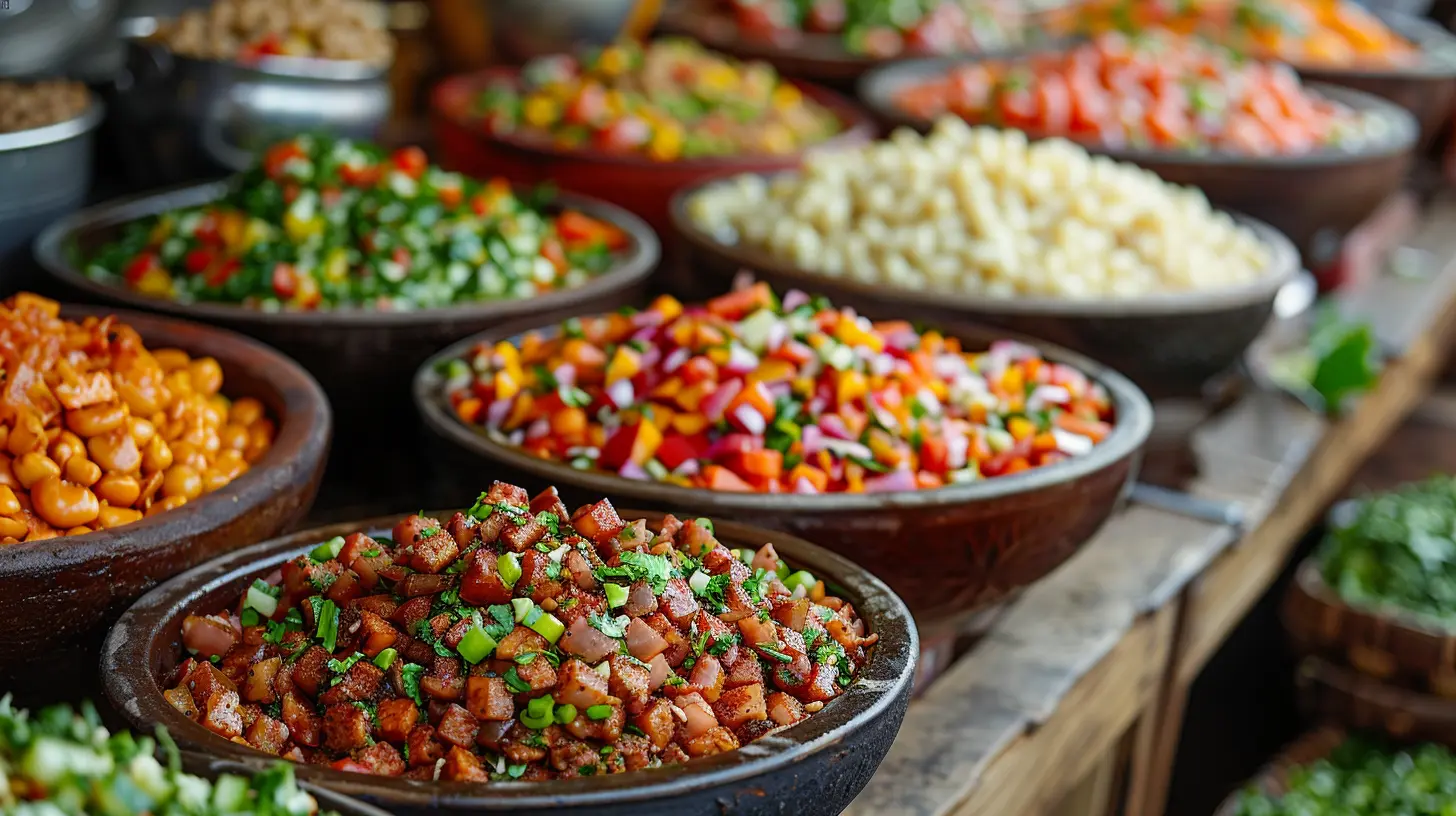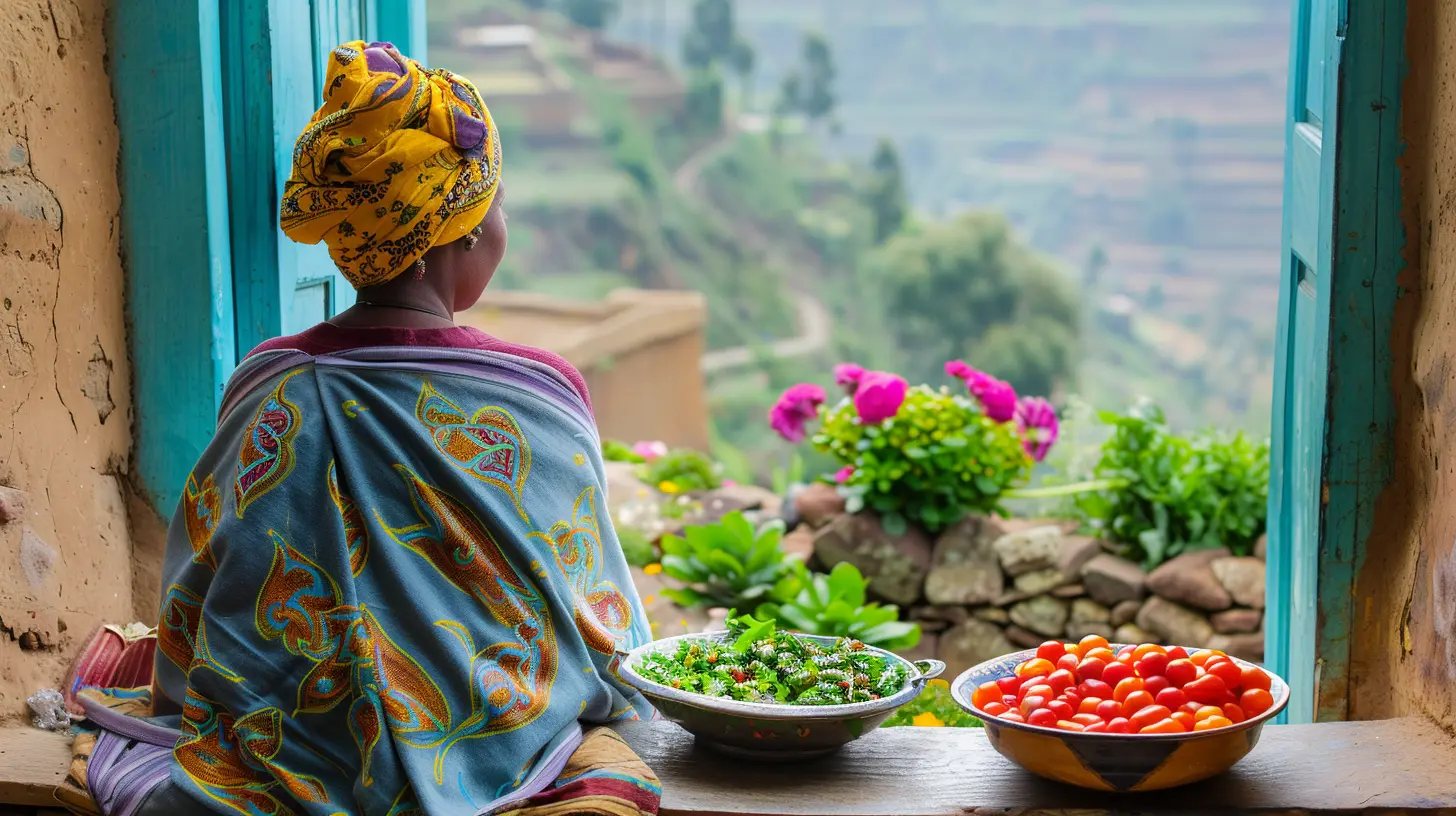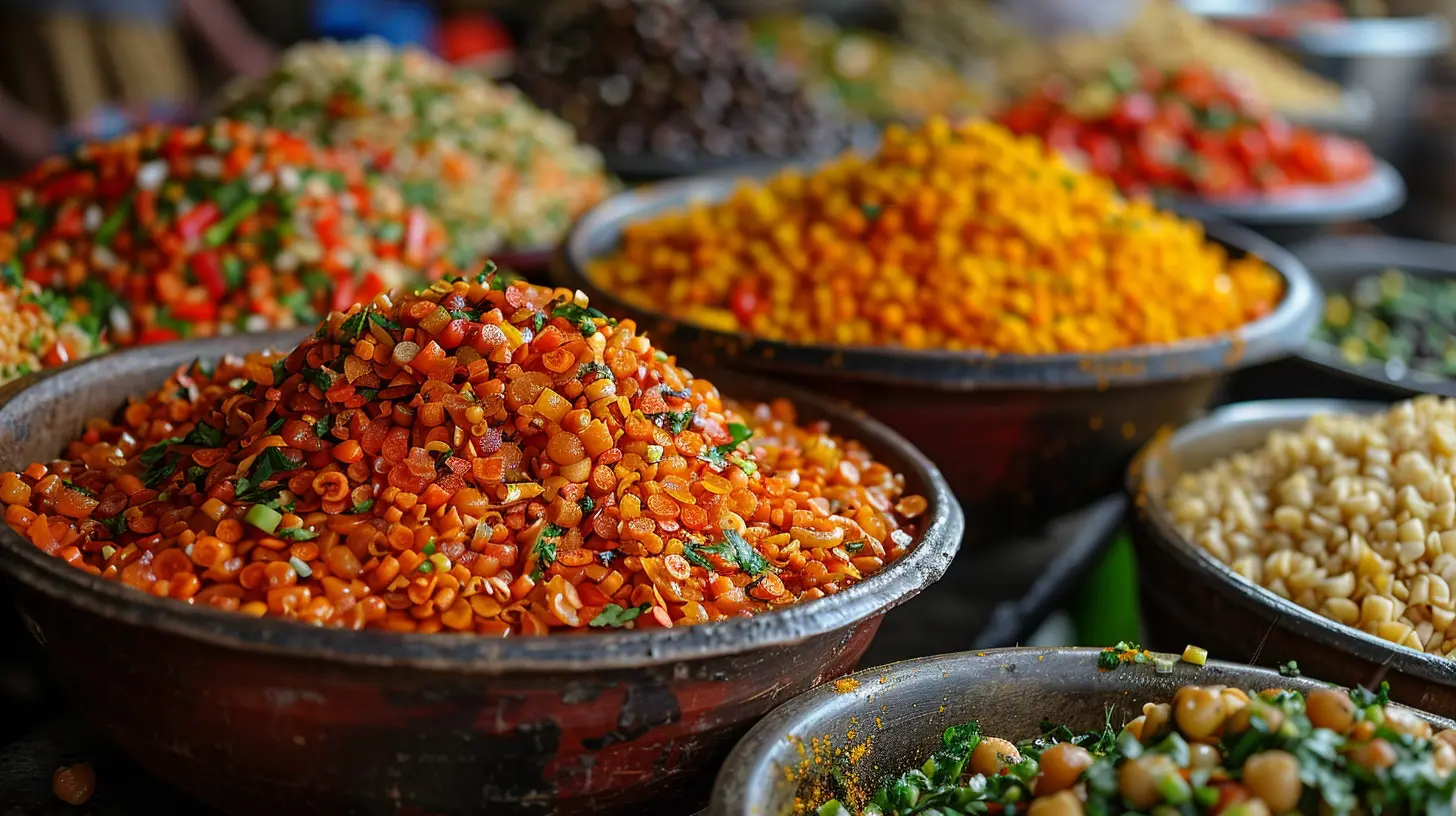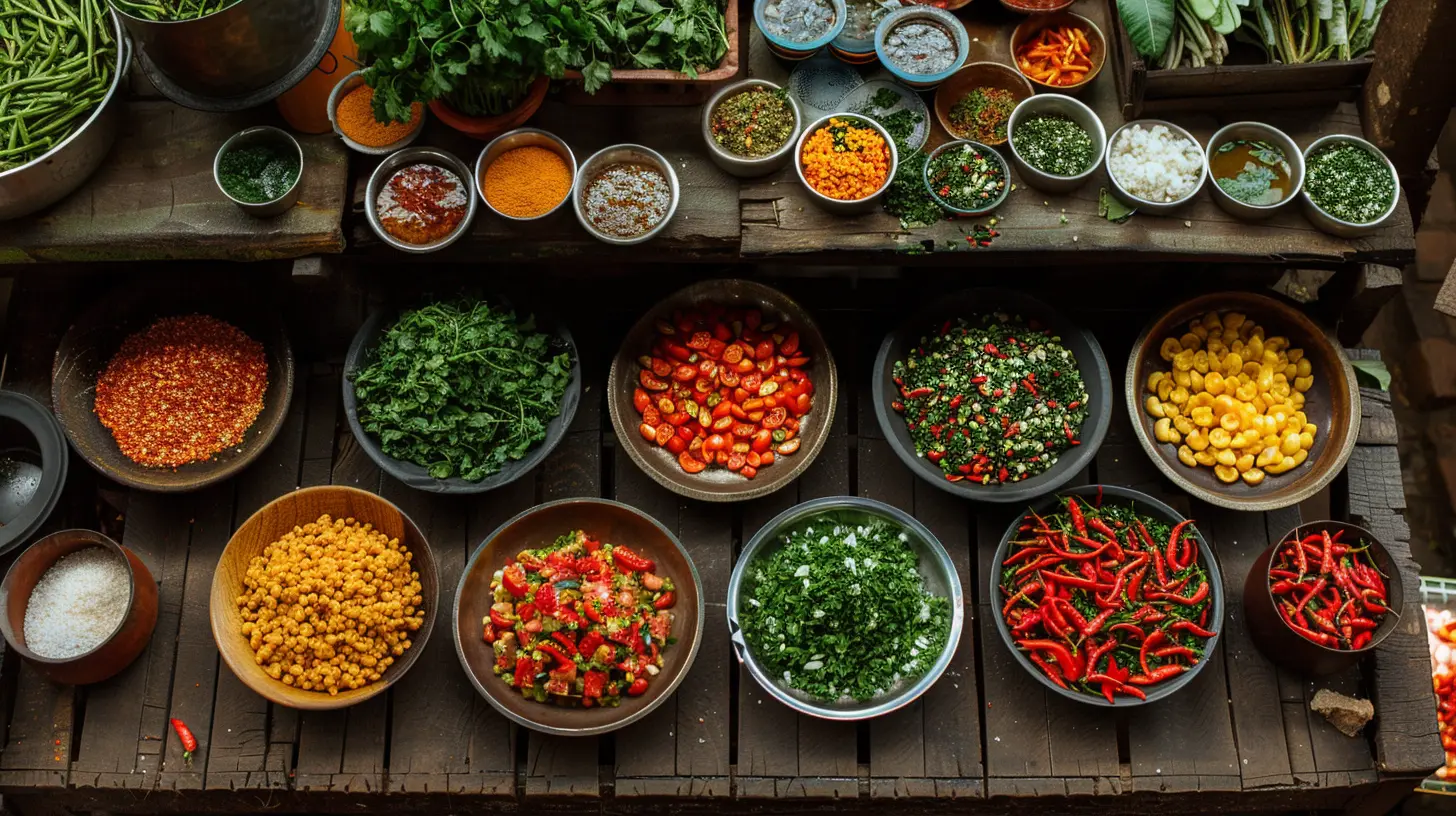Exploring the Vibrant Flavors of Ethiopian Cuisine
3 October 2025
If you’re a food lover with an adventurous palette, Ethiopian cuisine might just become your new favorite obsession. It’s spicy, colorful, unique, and deeply rooted in centuries-old traditions. With every bite, you’re not just enjoying a meal — you’re tasting a story, a culture, and a rich blend of flavors that have been passed down generation after generation.
Let’s take a deep dive into the world of Ethiopian food. We’ll journey through its ingredients, popular dishes, eating customs, and why it's capturing the hearts and taste buds of foodies around the globe.
What Makes Ethiopian Cuisine Stand Out?
You know how in some cuisines, the ingredients are pretty predictable? Maybe rice, some veggies, a little meat. But Ethiopian food plays by its own rules. It’s a full-blown flavor party, and the guest of honor is spice.We’re talking about a cuisine that brings earthy, tangy, and fiery flavors together in perfect harmony. The most iconic components? Injera, berbere spice, and rich, slow-cooked stews called “wats.”
But it’s not just about taste — Ethiopian food is all about sharing. Meals are traditionally communal, served on one big platter for everyone to dig into with their hands. No forks, no knives — just good food, good friends, and a whole lot of culture.
A Quick Look at Ethiopian Food Culture
Food in Ethiopia is more than just sustenance. It's a reflection of identity, hospitality, and even spirituality. Many Ethiopians follow the Orthodox Christian faith, which means fasting (and by fasting, we mean eating vegan) is a big part of the food culture.This has given rise to a huge range of plant-based dishes — perfect for vegetarians and vegans. And the best part? You won't even miss the meat; the spices and flavors are that bold and satisfying.
The Star of the Show: Injera
Let’s start with the base of almost every Ethiopian meal — injera. It’s a sour, spongy flatbread made from teff flour, a tiny grain that packs a serious nutritional punch. Gluten-free folks, rejoice — teff is naturally gluten-free!Injera isn’t just a side dish. It’s the plate, the utensil, and the bread — all in one. Your meal is typically served on top of a large round injera, and you tear off pieces to scoop up the different dishes. It’s kind of like using a fluffy edible spoon.
That tangy taste you get from injera? It comes from the fermentation process. It’s got that same kind of zing you get from sourdough but with a softer, more pancake-like texture. And it soaks up stew like a dream.
Let’s Talk Spice: Berbere & Mitmita
Have you ever tasted a dish and thought, "Wow, that’s got layers!" That’s what Ethiopian spice blends bring to the table. Two of the key players are:1. Berbere
This is the backbone of Ethiopian seasoning. A fiery red blend of chili peppers, garlic, ginger, basil, korarima (a local spice), fenugreek, and other warm spices. It’s warm, complex, slightly sweet, and packs a slow-building heat.You’ll find berbere in just about everything — from stews to lentils to grilled meats. It’s like the all-purpose seasoning of Ethiopia. Think of it as the culinary equivalent of a power chord in a rock song — bold, harmonious, and unforgettable.
2. Mitmita
This one’s for the heat chasers. Mitmita is even spicier than berbere and has a fine, powdery texture. It’s often sprinkled on raw meat dishes or used as a dip with injera. Made from African bird’s eye chili, cardamom, cloves, and salt, this spice mix doesn’t mess around.The Delicious Variety of Ethiopian Dishes
Are you starting to feel hungry? Let's get into the heart of the matter — the dishes! Ethiopian cuisine has a lineup of must-try meals that will have your taste buds dancing.1. Doro Wat — The National Dish
If Ethiopia had a signature dish, this would be it. Doro wat is a spicy chicken stew made with berbere, onions (and we mean a LOT of them), garlic, and hard-boiled eggs. The chicken is slow-cooked until tender, and the sauce is thick and deeply flavorful.You’ll usually find this served during holidays and special celebrations. It’s rich, spicy, and completely addictive.
2. Tibs — Sizzling Goodness
Tibs is essentially sauteed meat — usually beef or lamb — cooked in butter with onions, garlic, and often sizzling hot peppers. Depending on the region (and the cook), it can be mild or spicy. Think of it as the Ethiopian version of stir-fry, but with a ton more personality.It's often reserved for special guests, so you know you’re in for a treat when it lands on your table.
3. Kitfo — For the Brave Palate
Kitfo is one of those love-it-or-hate-it dishes. It’s made with raw minced beef, seasoned with mitmita and niter kibbeh (a clarified butter infused with herbs and spices). Sound intense? It is — in the best kind of way.If raw meat isn’t your thing, don’t worry. It’s often served lightly cooked (leb leb) too.
4. Shiro — Plant-Based Perfection
For a vegan dish that doesn’t skimp on flavor, shiro is a go-to. It’s a thick, spicy stew made from powdered chickpeas or broad beans, simmered with garlic, onions, and berbere. It’s creamy, comforting, and one of the most beloved dishes in Ethiopian homes.You won’t miss the meat — promise.
5. Misir Wat — Hearty & Spicy Lentils
Another vegan staple, misir wat is made from red lentils simmered in berbere and onions until they’re tender and packed with flavor. It’s often part of a combo platter served atop injera, and it’s seriously satisfying.The Joy of Communal Eating
One of the most heartwarming things about Ethiopian food is how social it is. Meals are meant to be shared — literally.Everything is served on one giant piece of injera, topped with mounds of different stews and veggies. Everyone gathers around and eats with their right hand, tearing off pieces of injera and scooping up bites of food.
And there’s this beautiful tradition called “gursha” — where one person feeds another a bite as a sign of respect, love, or friendship. Sharing food in Ethiopia isn’t just a mealtime ritual — it’s a way of showing affection.
Don't Forget the Coffee Ceremony
Ethiopia is the birthplace of coffee, and they take it seriously. The traditional coffee ceremony is an experience in itself: green coffee beans are roasted, ground, and brewed in a jebena (a clay coffee pot). The aroma alone will have you hooked.It's often served with snacks like popcorn or roasted barley. The ceremony can last an hour or more and involves three rounds of coffee — each one getting progressively lighter. It’s more than just a caffeine fix; it’s a social and spiritual ritual that brings people together.
Where to Try Ethiopian Food
You don’t have to travel all the way to Addis Ababa to enjoy Ethiopian cuisine. These days, you’ll find amazing Ethiopian restaurants in cities around the world — especially in places like Washington D.C., Toronto, London, and Los Angeles.Look for places that serve food on injera and offer combo platters — they’re a great way to sample different dishes at once. And don’t be shy! Ask the server for recommendations. Most are more than happy to guide you through your first Ethiopian food experience.
Cooking Ethiopian Dishes at Home
Feeling inspired to try your hand at Ethiopian cooking? Go for it! While some ingredients like teff or berbere might not be at your local grocery store, they’re easy to find online or at international markets.Start simple. A dish like misir wat or shiro is great for beginners. You’ll need berbere spice, red lentils or chickpea flour, onions, garlic, and a little patience. The recipes are usually simple, but the simmering time is what builds those deep flavors.
And hey, making your own injera at home is totally doable. It takes a few days to ferment the batter, but the result is worth every second.
Final Thoughts: A Flavorful Adventure Awaits
Ethiopian cuisine is a sensory experience unlike any other. The textures, the spices, the rich traditions, and the communal way of eating make every meal feel special.Whether you’re a seasoned foodie or someone who just loves a good meal, Ethiopian food invites you to slow down, savor, and connect — with the people around you and with a culture rich in flavor and warmth.
So next time you're looking for something new to try, go ahead — reach for that injera, scoop up some doro wat, and let your taste buds take a journey to the Horn of Africa. You might just fall in love.
all images in this post were generated using AI tools
Category:
Foodie TravelAuthor:

Taylor McDowell
Discussion
rate this article
1 comments
Yasmine Watson
Ethiopian cuisine is a delightful journey for the senses! Embrace the rich flavors and communal dining experience—each dish tells a story waiting to be savored. Enjoy!
October 10, 2025 at 2:32 PM

Taylor McDowell
Thank you! I'm glad you appreciate the rich flavors and communal spirit of Ethiopian cuisine. Each meal truly is a unique story!


